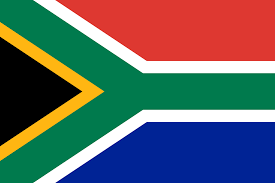Difference between revisions of "Language/Afrikaans/Grammar/How-to-Use-Be"
m (Quick edit) |
m (Quick edit) |
||
| Line 50: | Line 50: | ||
|description=In this lesson, you will learn how to use the verb "be" in Afrikaans. This is an intermediate level lesson, so if you are a beginner, you may want to review some of the basics first. | |description=In this lesson, you will learn how to use the verb "be" in Afrikaans. This is an intermediate level lesson, so if you are a beginner, you may want to review some of the basics first. | ||
}} | }} | ||
==Related Lessons== | |||
* [[Language/Afrikaans/Grammar/Definite-article|Definite article]] | |||
* [[Language/Afrikaans/Grammar/The-Rule-of-“One-Knee”|The Rule of “One Knee”]] | |||
* [[Language/Afrikaans/Grammar/Future-Tense|Future Tense]] | |||
* [[Language/Afrikaans/Grammar/Adjectives|Adjectives]] | |||
* [[Language/Afrikaans/Grammar/Questions|Questions]] | |||
* [[Language/Afrikaans/Grammar/Common-Errors|Common Errors]] | |||
* [[Language/Afrikaans/Grammar/Negation|Negation]] | |||
* [[Language/Afrikaans/Grammar/Sentence-Structure|Sentence Structure]] | |||
* [[Language/Afrikaans/Grammar/Formal-vs-Informal-Imperatives|Formal vs Informal Imperatives]] | |||
* [[Language/Afrikaans/Grammar/Gender|Gender]] | |||
{{Afrikaans-Page-Bottom}} | {{Afrikaans-Page-Bottom}} | ||
Revision as of 23:57, 28 February 2023
Hi Afrikaans learners! 😊
In this lesson, we will learn how to use the verb "be" in Afrikaans. This is an intermediate level lesson, so if you are a beginner, you may want to review some of the basics first.
The verb "be" is used to express existence, identity, and location. It is also used to form the passive voice. In Afrikaans, the verb "be" is conjugated differently depending on the subject pronoun.
The following table shows the conjugation of the verb "be" for each subject pronoun:
| Subject | Afrikaans | Pronunciation | English Translation |
|---|---|---|---|
| ek | is | /ɪs/ | am |
| jy | is | /ɪs/ | are |
| hy/sy/dit | is | /ɪs/ | is |
| ons | is | /ɪs/ | are |
| julle | is | /ɪs/ | are |
| hulle | is | /ɪs/ | are |
Let's look at some examples of how to use the verb "be" in sentences:
- Person 1: Ek is hier. (/ɪs hiːr/ I am here.)
- Person 2: Jy is vrolike. (/ɪs vrolikə/ You are cheerful.)
- Person 1: Hy is 'n student. (/ɪs ən stuːdənt/ He is a student.)
- Person 2: Ons is gereed. (/ɪs geriːt/ We are ready.)
- Person 1: Julle is lief vir Afrikaans. (/ɪs liːf fər afrikɑːns/ You all love Afrikaans.)
- Person 2: Hulle is op die strand. (/ɪs ɔp diː strɑnt/ They are at the beach.)
The verb "be" can also be used to form the passive voice. To do this, the verb "word" (to become) is used with the past participle of the main verb. For example:
- Die boek word gelees. (/diː buk vɔrd gəliːs/ The book is being read.)
- Die kos word gemaak. (/diː kɔs vɔrd gəmɑːk/ The food is being made.)
- Die huis word gebou. (/diː hœys vɔrd gəbuː/ The house is being built.)
Now that you know how to use the verb "be" in Afrikaans, why not practice with a native speaker? Find native speakers and ask them any questions!
➡ If you have any questions, please ask them in the comments section below.
➡ Feel free to edit this wiki page if you think it can be improved. 😎
Related Lessons
- Definite article
- The Rule of “One Knee”
- Future Tense
- Adjectives
- Questions
- Common Errors
- Negation
- Sentence Structure
- Formal vs Informal Imperatives
- Gender
